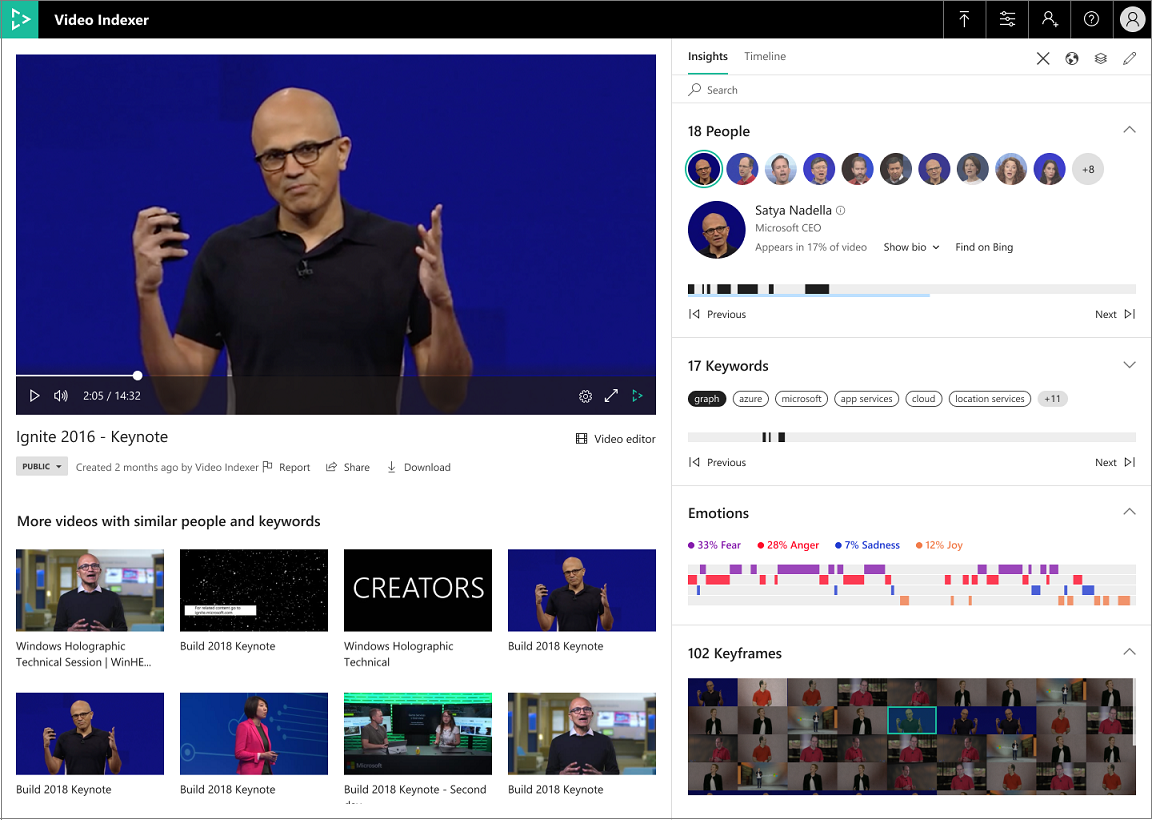View Azure AI Video Indexer insights
Important
Due to the Azure Media Services retirement announcement, Azure AI Video Indexer announces Azure AI Video Indexer features adjustments. See Changes related to Azure Media Service (AMS) retirement to understand what this means for your Azure AI Video Indexer account. See the Preparing for AMS retirement: VI update and migration guide.
This article shows you how to view the Azure AI Video Indexer insights of a video.
Browse to the Azure AI Video Indexer website and sign in.
Find a video from which you want to create your Azure AI Video Indexer insights. For more information, see Find exact moments within videos.
Press Play.
The page shows the video's insights.

Select which insights you want to view. For example, faces, keywords, sentiments. You can see the faces of people and the time ranges each face appears in and the % of the time it's shown.
The Timeline tab shows transcripts with timelines and other information that you can choose from the View drop-down.
The player and the insights are synchronized. For example, if you click a keyword or the transcript line, the player brings you to that moment in the video. You can achieve the player/insights view and synchronization in your application. For more information, see Embed Azure Indexer widgets into your application.
For more information, see Insights output.
Considerations
-
The JSON output produced by the website or API contains
InsightsandSummarizedInsightselements. We highly recommend usingInsightsand not usingSummarizedInsights(which is present for backward compatibility). If you plan to download artifact files, beware of the following:
Warning
We do not recommend that you use data directly from the artifacts folder for production purposes. Artifacts are intermediate outputs of the indexing process. They are essentially raw outputs of the various AI engines that analyze the videos; the artifacts schema may change over time. It is recommended that you use the Get Video Index API, as described in Get insights and artifacts produced by the API.
Feedback
Coming soon: Throughout 2024 we will be phasing out GitHub Issues as the feedback mechanism for content and replacing it with a new feedback system. For more information see: https://aka.ms/ContentUserFeedback.
Submit and view feedback for
